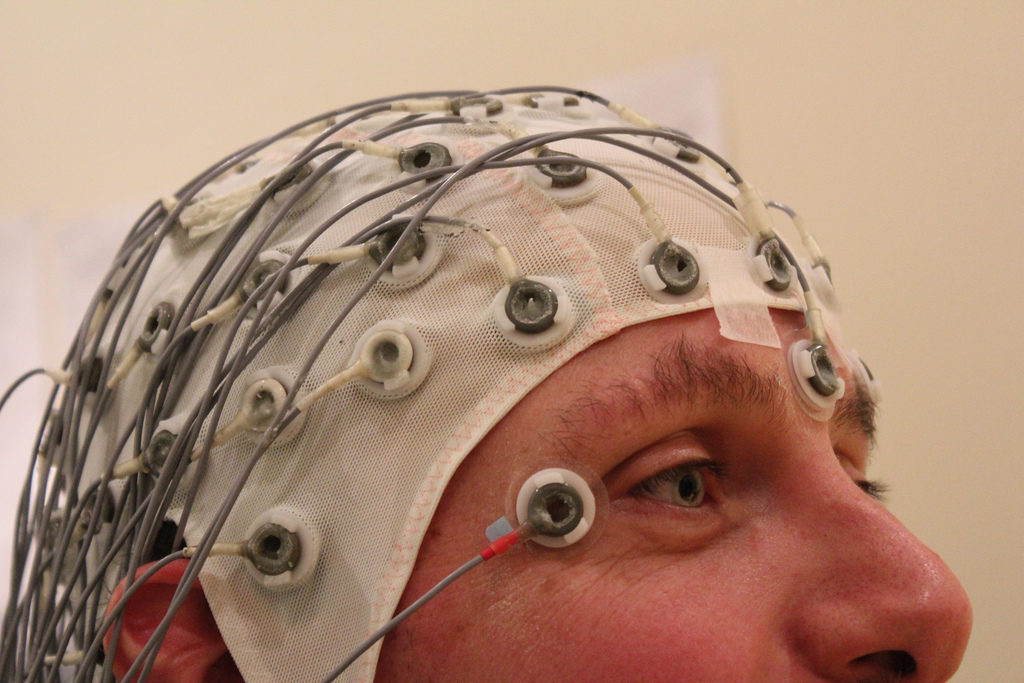A new study demonstrates that the practice of mindfulness may ease pain in a way that is mechanistically distinct from the placebo effect. Research, published in the Journal of Neuroscience, found that mindfulness meditation not only outperformed placebo and fake meditation for pain relief but that it also activated different brain regions than the placebo treatments.
 There is an accumulating body of evidence that mindfulness meditation, defined in this study as “a cognitive practice based on developing nonjudgmental awareness of arising sensory events,” can reduce the subjective experience of pain in various settings. However, scientists have yet to determine how mindfulness practice is able to lessen the experience of pain. Some have suggested that it reduces the anxiety that often accompanies a painful experience, while others speculate that it works similar to a placebo.
There is an accumulating body of evidence that mindfulness meditation, defined in this study as “a cognitive practice based on developing nonjudgmental awareness of arising sensory events,” can reduce the subjective experience of pain in various settings. However, scientists have yet to determine how mindfulness practice is able to lessen the experience of pain. Some have suggested that it reduces the anxiety that often accompanies a painful experience, while others speculate that it works similar to a placebo.
To investigate whether mindfulness meditation engages the same pain relieving neural mechanisms in the brain that are associated with the placebo effect, a team of researchers, led by Fadel Zeidan from the Wake Forest School of Medicine, used neuroimaging to compare patients using mindfulness and various placebo treatments.
Psychosocial contexts have been shown to have a powerful effect on the experience of pain as well, and some scientists have wondered whether the “nonspecific” components of mindfulness, such as the silence or positive interaction with the therapist, rather than the therapy itself might be influencing the results of past studies.
To account for this possibility the researchers also set up a “sham” mindfulness group that incorporated the “nonspecific” elements of meditation but did not follow mindfulness techniques. The sham treatment was set up to lead the participants to believe that they were practicing actual mindfulness therapy. Indeed, “there were no significant differences in ‘perceived meditative effectiveness’ between the mindfulness and sham mindfulness meditation groups.” Interestingly, however, only the actual mindfulness group showed increased scores on mindfulness measures after the intervention.
The research team found that mindfulness meditation engaged different brain regions than the “sham” meditation and placebo cream interventions. In addition, those in the mindfulness meditation group showed the greatest reduction in pain.
This study is the first to demonstrate that mindfulness meditation is mechanistically distinct and produces reductions in pain intensity and pain unpleasantness ratings above and beyond the analgesic effects seen with either placebo conditioning or sham mindfulness meditation.
The sham mindfulness did produce a significant reduction in pain scores, but these decreases appeared to be correlated to lower respiration rates, leading the researchers to suggest that the effect was due to the relaxation response produced by the “nonspecific” elements of the intervention. Mindfulness meditation, on the other hand, produced even greater reductions in pain intensity and unpleasantness that were independent of respiration rates. The researchers suggest that these pain reductions were achieved through neural mechanisms unrelated to typical breathing-related relaxation techniques.
The researchers summarized the significance of their findings:
Recent findings have demonstrated that mindfulness meditation significantly reduces pain. Given that the “gold standard” for evaluating the efficacy of behavioral interventions is based on appropriate placebo comparisons, it is imperative that we establish whether there is an effect supporting meditation-related pain relief above and beyond the effects of placebo. Here, we provide novel evidence demonstrating that mindfulness meditation produces greater pain relief and employs distinct neural mechanisms than placebo cream and sham mindfulness meditation. Specifically, mindfulness meditation-induced pain relief activated higher order brain regions, including the orbitofrontal and cingulate cortices. In contrast, placebo analgesia was associated with decreased pain-related brain activation. These findings demonstrate that mindfulness meditation reduces pain through unique mechanisms and may foster greater acceptance of meditation as an adjunct pain therapy.
*
Zeidan, F., Emerson, N. M., Farris, S. R., Ray, J. N., Jung, Y., McHaffie, J. G., & Coghill, R. C. (2015). Mindfulness Meditation-Based Pain Relief Employs Different Neural Mechanisms Than Placebo and Sham Mindfulness Meditation-Induced Analgesia. The Journal of Neuroscience, 35(46), 15307-15325. (Abstract)














